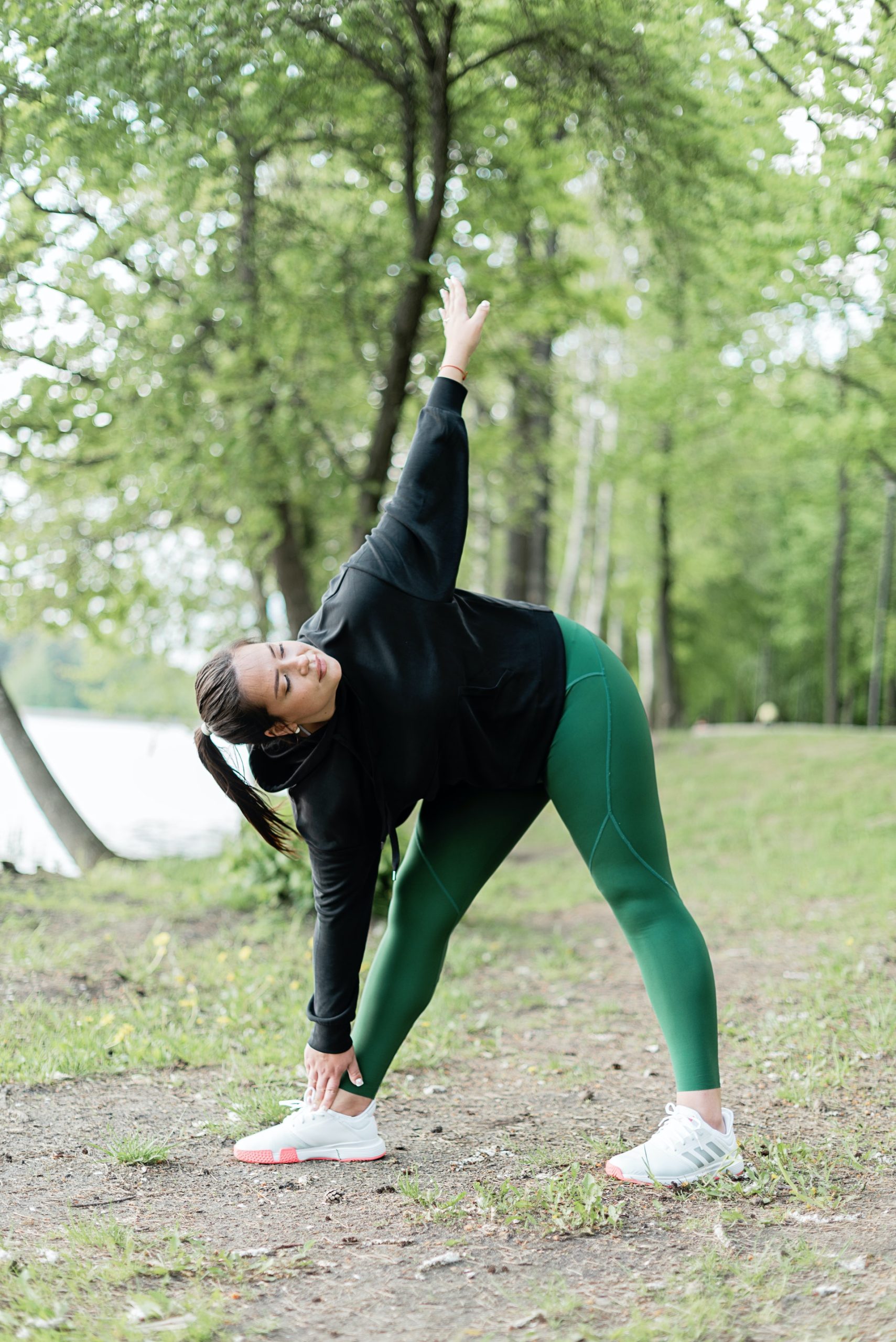Stretching
Stretching is a form of physical exercise in which a specific muscle or tendon (or muscle group) is deliberately flexed or stretched in order to improve the muscle’s felt elasticity and achieve comfortable muscle tone. The result is a feeling of increased muscle control, flexibility, and range of motion. Stretching is also used therapeutically to alleviate cramps.
In its most basic form, stretching is a natural and instinctive activity; it is performed by humans and many other animals. It can be accompanied by yawning. Stretching often occurs instinctively after waking from sleep, after long periods of inactivity, or after exiting confined spaces and areas.
Increasing flexibility through stretching is one of the basic tenets of physical fitness. It is common for athletes to stretch before (for warming up) and after exercise in an attempt to reduce risk of injury and increase performance.
Stretching can be dangerous when performed incorrectly. There are many techniques for stretching in general, but depending on which muscle group is being stretched, some techniques may be ineffective or detrimental, even to the point of causing hypermobility, instability, or permanent damage to the tendons, ligaments, and muscle fiber. The physiological nature of stretching and theories about the effect of various techniques are therefore subject to heavy inquiry.
Although static stretching is part of some warm-up routines, a study in 2013 indicated that it weakens muscles. For this reason, an active dynamic warm-up is recommended before exercise in place of static stretching.
Types of Stretches
There are three kinds of stretching: static, dynamic (bouncing), and Proprioceptive Neuromuscular Facilitation (PNF), where the muscle is passively stretched, then the muscle is contracted, then stretched further. However, static and dynamic stretching are the two most common forms seen. Dynamic stretching is a movement-based stretch aimed on increasing blood flow throughout the body while also loosing up the muscle fibers. An example of this could be high knees or lunges. Whereas static stretching is a more stationary stretch, where one will hold a stretch for a certain duration of time without moving. This will give the muscles a more intense and deeper stretch when compared to dynamic.
Stretching Tools
- Foam Roller
- BOSU
- Stretch Band
- Flex cushion
Yes. It is not a must that you stretch before or after your regular workout. It is simply important that you stretch sometime.
This can be when you wake up, before bed, or during breaks at work.
“Stretching or flexibility should be a part of a regular program,” Millar says.

